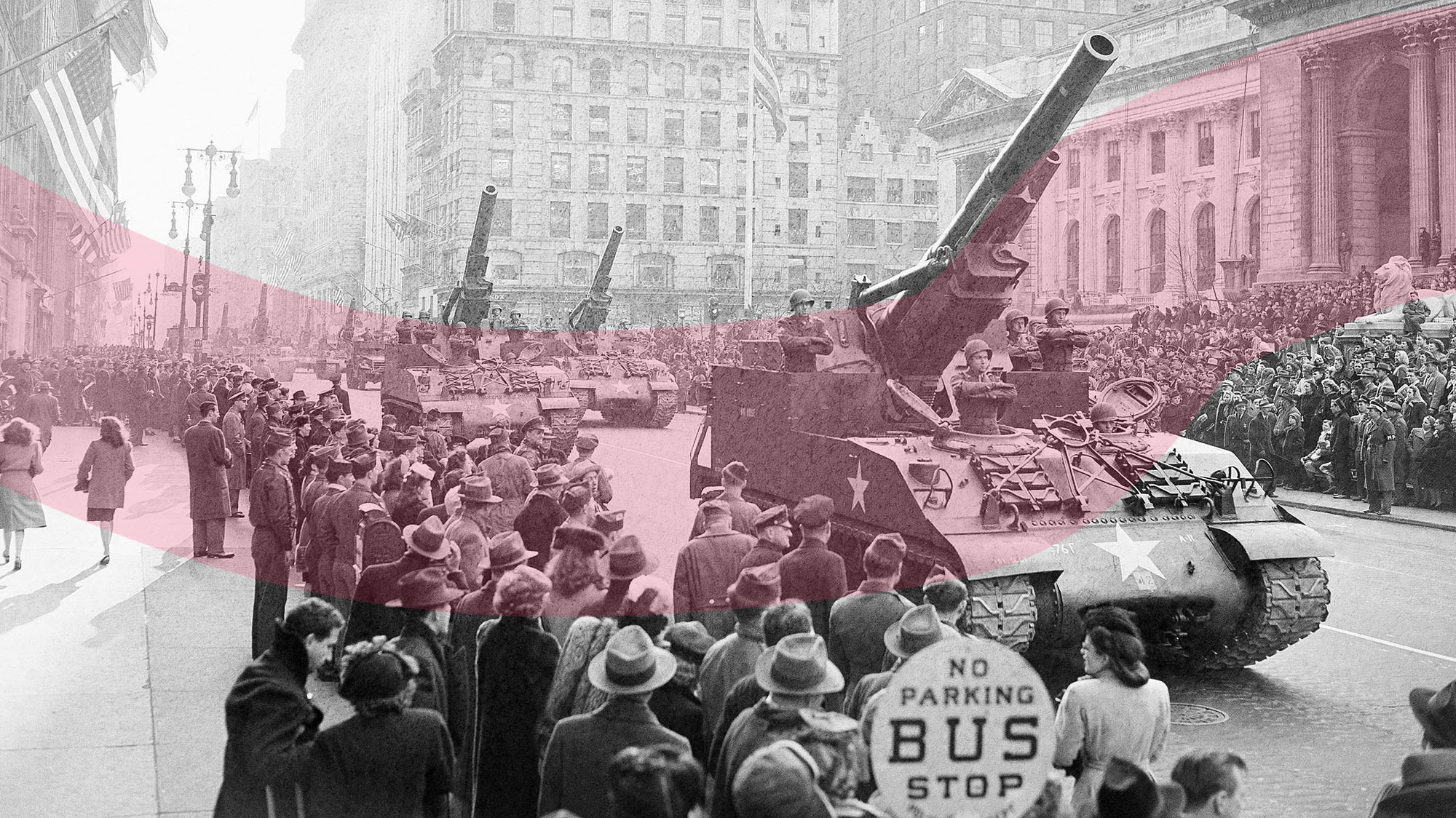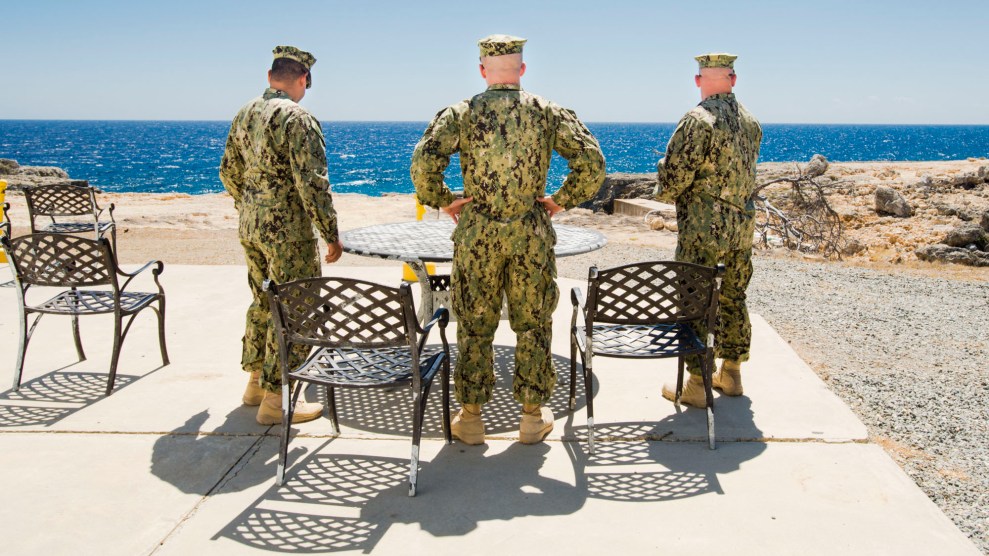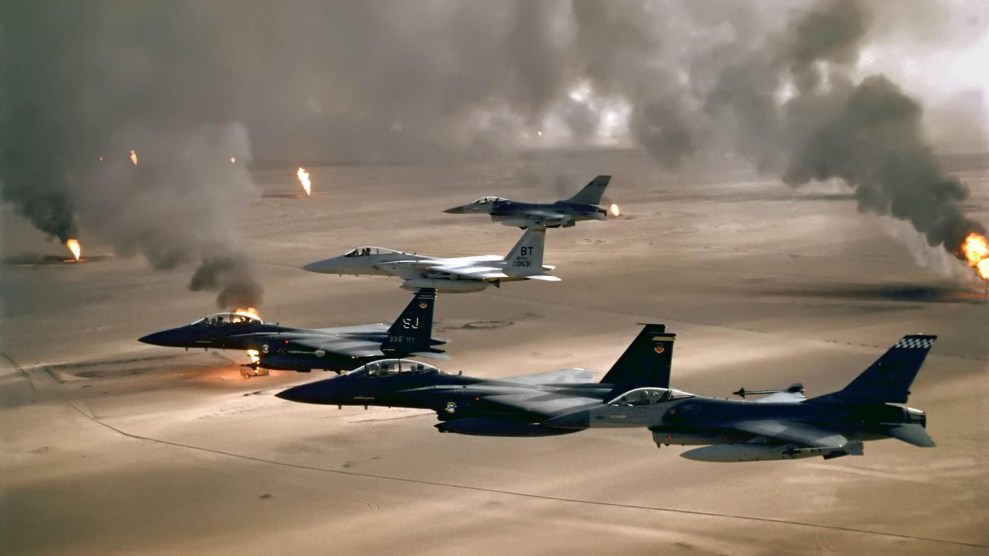As has now been widely reported, in a meeting last month, President Trump told high-ranking military officials that he wanted a military parade. But over history the United States has generally left military parades as a chest-thumping show of force to less self-assured despots—and Russia. The last time the United States held a national, tanks-in-the-streets military parade was over 25 years ago, in 1991, to celebrate the end of the Gulf War. And before that, large military parades hadn’t been seen since the early ’60s, when Cold War tensions led Kennedy and Eisenhower to flex some ballistic muscle during their inauguration parades.
S0, as we now face Trump’s request, here’s a quick look at what national military parades have been like over the years in the US, when troops came home from World War I and II and after Operation Desert Storm—and when the parades were not just an exercise in ego stroking.
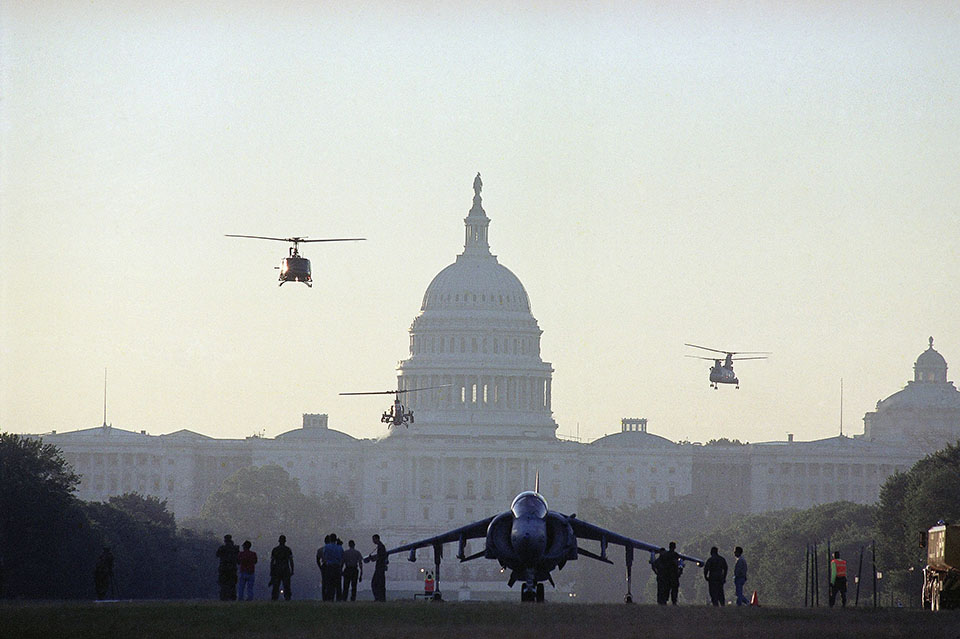
A group of helicopters arrived near a Harrier Jump Jet on Capitol Hill on June 7, 1991, following the end of Gulf War. The equipment was to be on display during the National Victory Celebration in Washington, D.C., the following day.
J. Scott Applewhite/AP
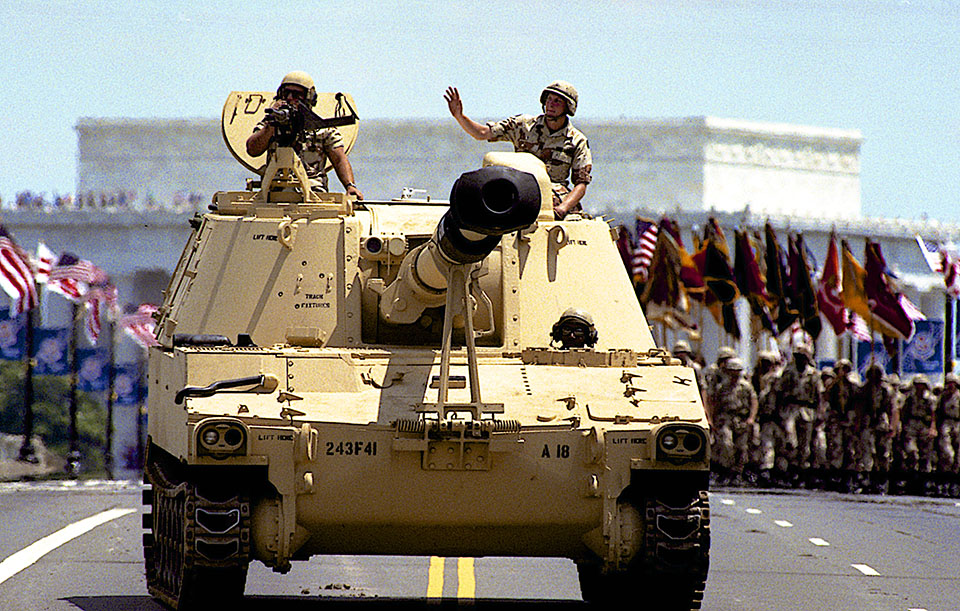
A flag-waving crowd of approximately 200,000 cheered veterans of Operation Desert Storm as the nation’s capital staged its biggest victory celebration since the end of World War II. Led by Gen. H. Norman Schwarzkopf, about 8,800 troops marched across Arlington Memorial Bridge on June 8, 1991. Thirty-one war machines, such as M-1 tanks, Humvees, rocket launchers, and the famed Patriot missile, were also included in the parade.
Mark Reinstein/ZUMA
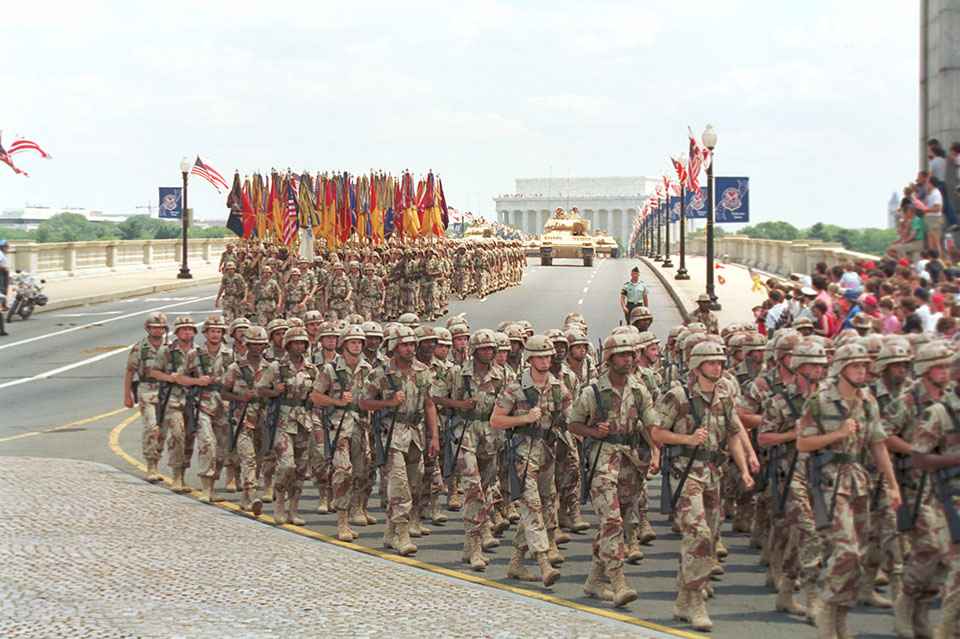
Troops marched over the Memorial Bridge in Washington, D.C., as they headed towards the Pentagon in 1991.
Doug Mills/AP
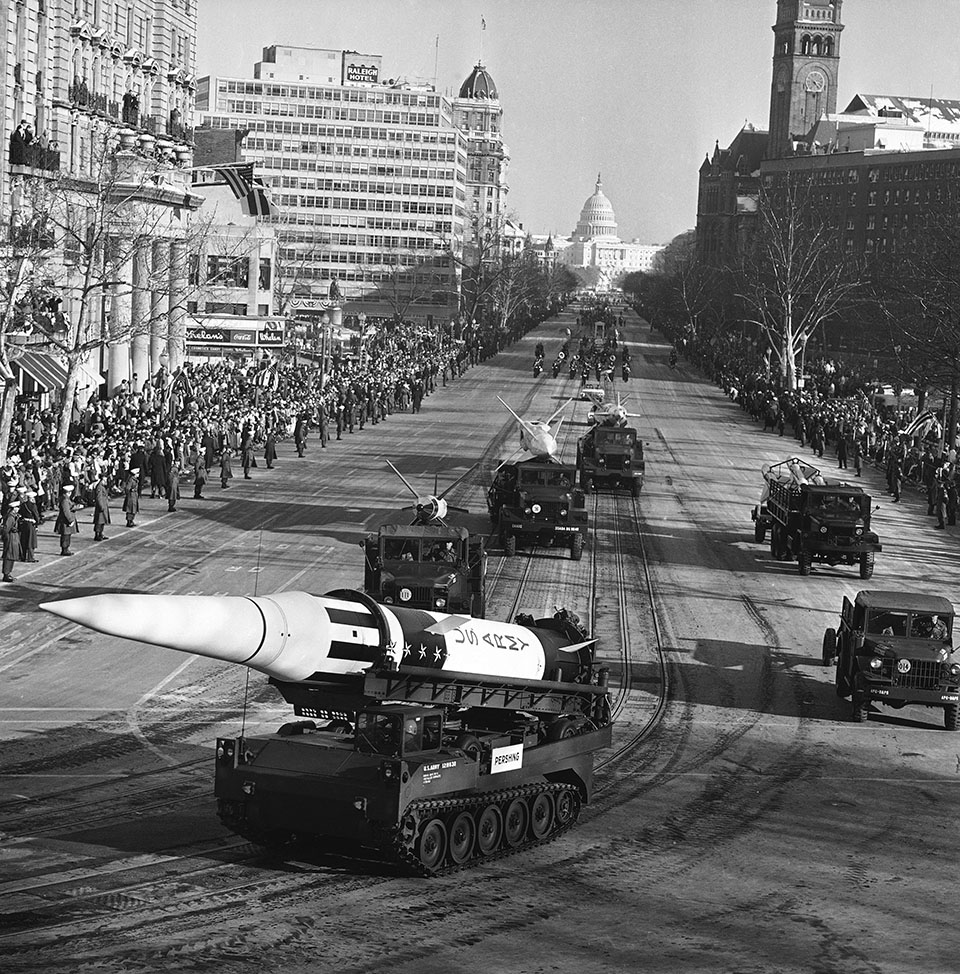
In 1961, an Army Pershing missile mounted on a tank-like carrier rode down Pennsylvania Avenue in Washington, D.C., as part of the inaugural parade for President John F. Kennedy. Following behind were additional missiles, from front: Lacrosse, Nike Hercules, and Nike Zeus.
AP
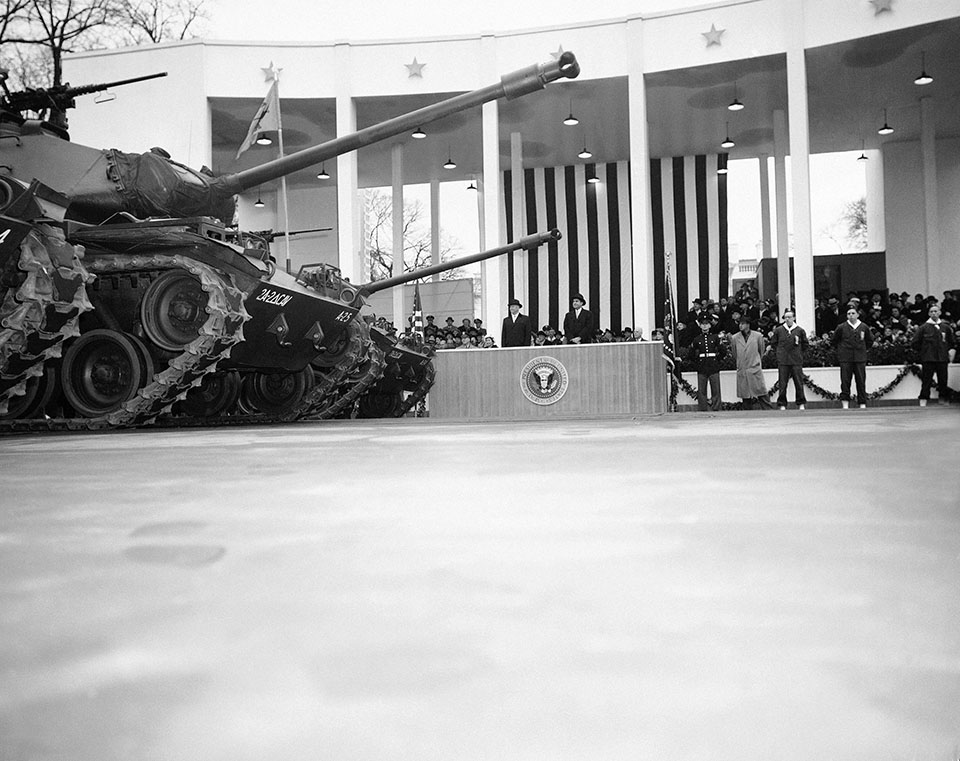
President Dwight Eisenhower and Vice President Richard Nixon got a closeup look at 90mm guns on Army tanks rolling along Pennsylvania Avenue past the White House reviewing stand during their inaugural parade in Washington, D.C., 1957.
AP
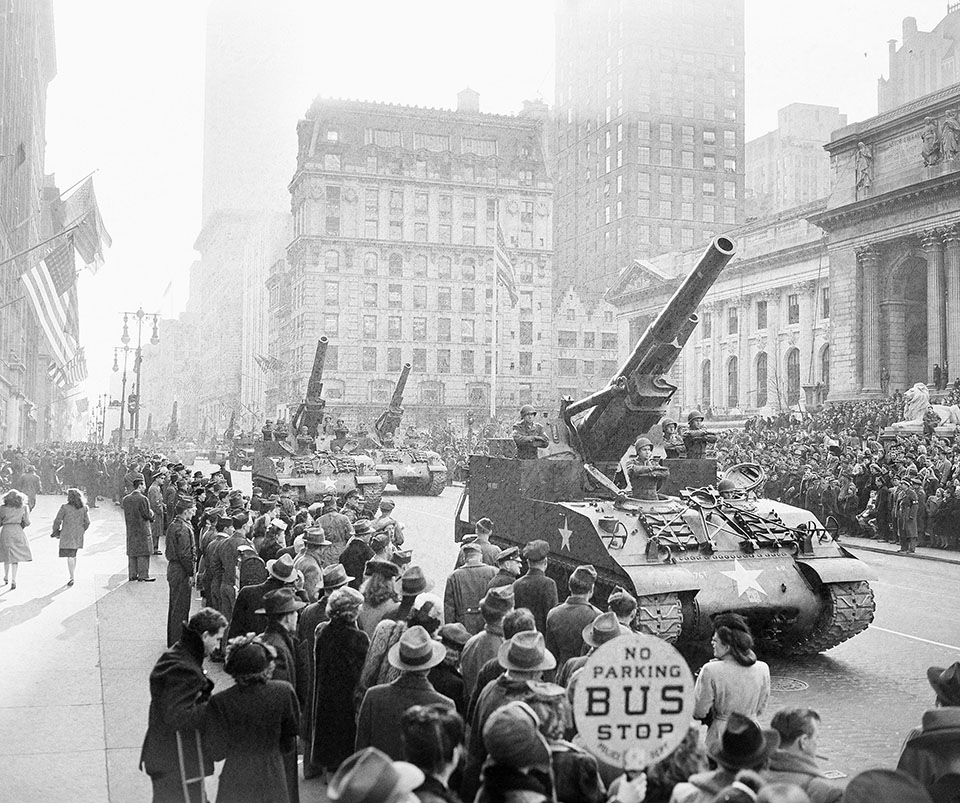
Soldiers stood at attention in their vehicles, which carried the canon-like heavy artillery weapons, 8-inch Howitzers, during the Victory Parade of the 82nd Airborne Division on Fifth Avenue in New York, 1946.
Harry Harris/AP
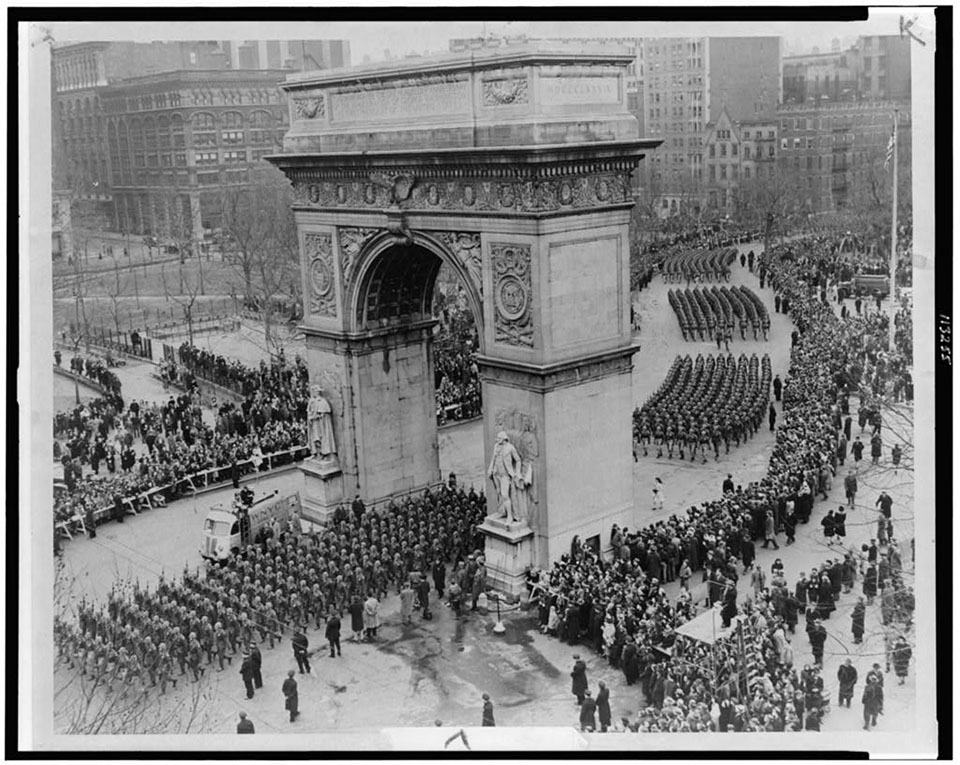
Members of the US Army’s 82nd Airborne Division paraded through the Washington Square Arch in New York City during the World War II Victory Parade on January 12, 1946.
Al Ravenna/World-Telegram/Library of Congress
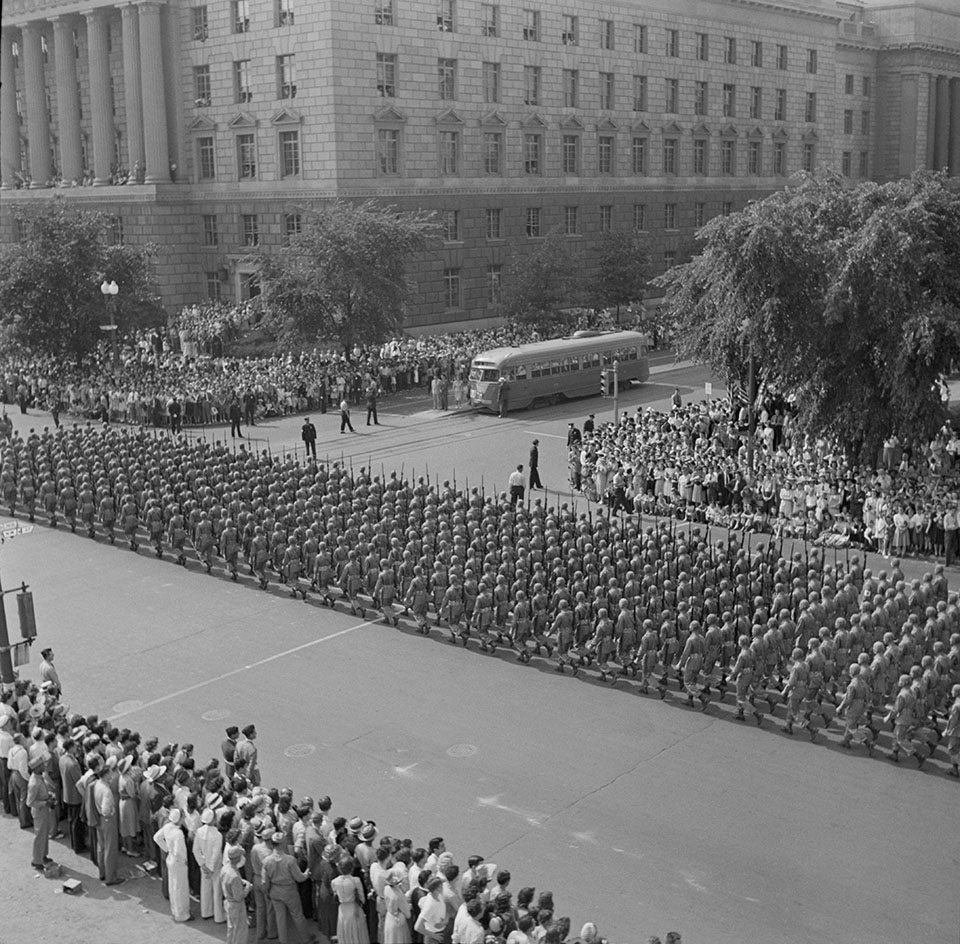
Troops marched in a Memorial Day parade in Washington, D.C., in May 1942.
Royden Dixon/Office of War Information/Circa Images/Glasshouse/ZUMA
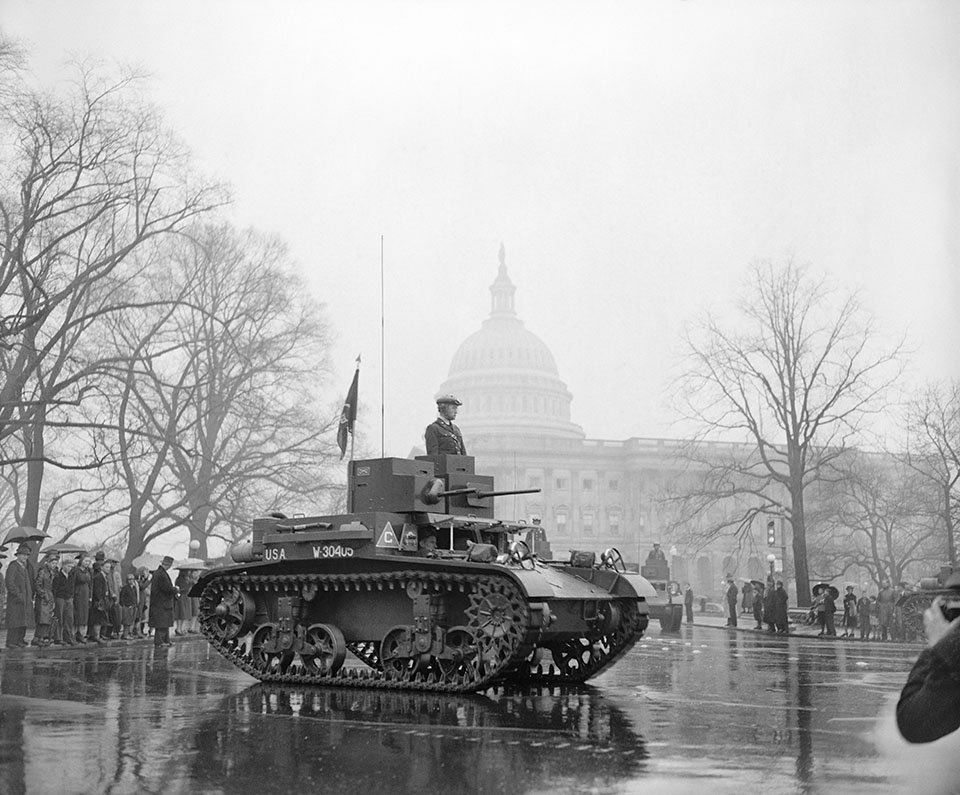
An Army tank passed in front of the US Capitol Building during an Army Day Parade in April 1939.
Harris & Ewing/Circa Images/Glasshouse/ZUMA
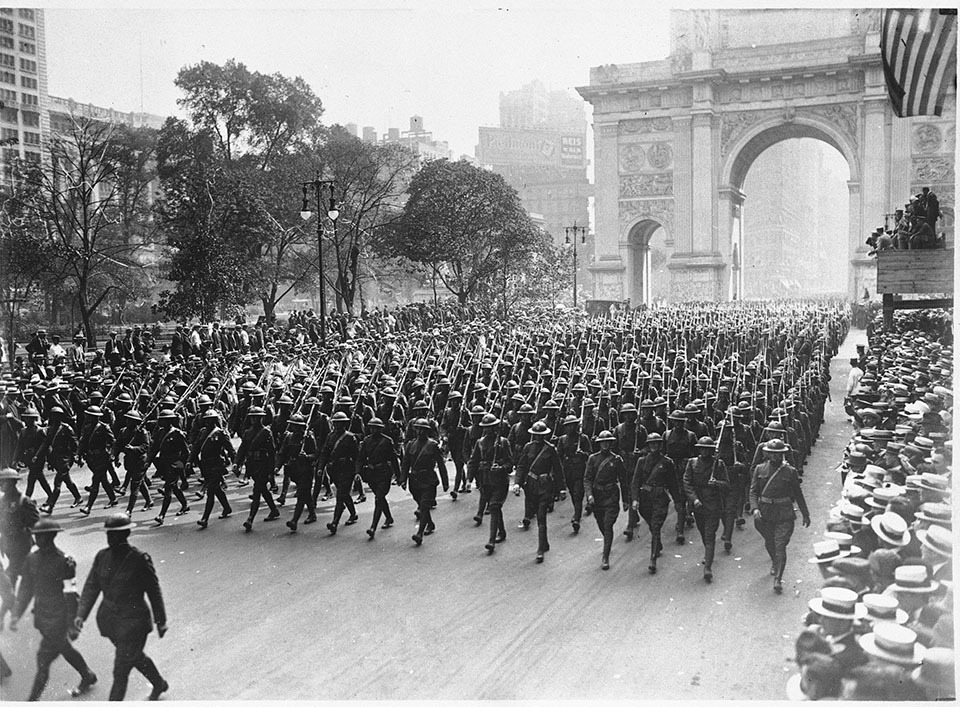
The US Marines marched down Fifth Avenue in New York in September, 1919, nearly a year after the end of World War 1. General John J. Pershing led the victory parade through New York. A week later, Pershing led a similar parade through Washington, D.C.
AP
